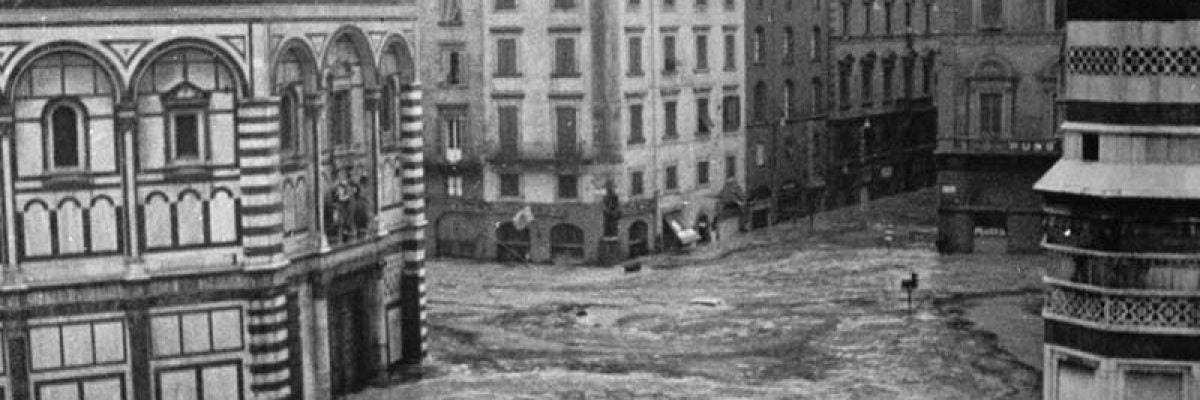
It is said that half of all the art in Europe is in Italy, and half of all the art in Italy is in Florence. That may not be arithmetically precise, but it can’t be far from the truth.
When Florentine art is mentioned, everyone thinks of the giant Uffizi Gallery, but there are many other showplaces, among my favorite being the Bargello, which once served as a jail but today houses chiefly sculpture, and the Museo dell’Opera del Duomo, where the best pieces from the cathedral are kept. The Bargello plays host to Donatello’s David, and a few minutes’ walk will take you to the Accademia, where you can see Michelangelo’s David.
Of the large cities in Italy, Florence may be my favorite. Rome has been more important historically and for a longer stretch of time, and Rome is GHQ for Catholics, but Florence has certain advantages over the Eternal City.
Its centro storico is easily crossed on foot. It is less than a mile from the train station near Santa Maria Novella to Santa Croce, the church that marks the eastern end of the historic district. The equivalent distance in Rome, from Termini Station to the Vatican, is two-and-a-quarter miles. These are straight-line distances. Increase them by half to accommodate turnings of medieval streets.
Mentioning Santa Croce reminds me of another advantage the city has over Rome: its gelato. Many Florentines say the best is served at Vivoli Gelateria, about halfway between Palazzo Vecchio and Santa Croce. I can’t vouch for that, since I haven’t tried every gelateria in Florence, but I have to say that Vivoli’s offerings are superb. The fruit flavors are shockingly strong. Try an arancia, and you’ll think that even the sweetest California orange lacks punch.
Florence is occupying my thoughts because I have begun a multi-month study of the city, its art, and its history. I have two dozen books about Florence on my shelves. I want to go through all of them leisurely, particularly the several fat volumes—such as Richard Goy’s Florence: The City and Its Architecture—that I didn’t get around to before my last visit. I’m gathering additional books. One that I just finished reading is Kathrine Kressmann Taylor’s Diary of Florence in Flood.
Florence has been inundated by the Arno six times since 1177. The worst flood had been that of 1333. On a street corner not far from Santa Croce you can look up and spot a fourteenth-century painted hand reaching up through waves to point to the high-water mark. The November 4, 1966, flood was worse.
Kressmann Taylor was staying in an old palazzo on the south side of the Arno. Trapped, she watched the river rise—up to three feet in a hour—and overflow its banks. The entire historic center went under water. In some places the water was eighteen feet deep.
“Six thousand out of the ten thousand shops of Florence have been wiped out. Ten thousand cars were caught in the center and damaged or demolished. The number of works of art injured or lost has now reached thirteen hundred, and there is no hope for the Cimabue crucifix. Millions of books lie under the mud.”
That was written a week after the flood enveloped the city. Fortunately, many of the mud-laden books were recovered and, over years, painstakingly cleaned and given new covers. Alas, many others were destroyed utterly. The Cimabue crucifix, which had been hanging in Santa Croce, located at the old city’s low point, lost sixty percent of its paint, but it was restored in a ten-year effort.
Anyone who appreciates priceless artifacts has to wince in reading of the devastation, but Kressmann Taylor devotes more pages to the people of Florence than to the artwork of Florence. In 1966, Florence was a city of small shops where most of the owners were just getting by after a slow recovery from the war and German occupation. Then the waters came. In a few hours they lost everything—not just their merchandise but their personal effects, since most of them lived above their shops.
Ninety percent of the Florentines had no warning of the cascade of water that was heading their way. They had no time to gather up things and drive out of town. Many of them woke in the night to find their bedrooms rapidly filling with muddy water that carried a thick film of oil: fuel oil farms upriver had been destroyed and spilled countless gallons of oil into the river.
Once the waters receded, Florence found itself with another kind of inundation: mud angels. These were young people, chiefly European but also from America and elsewhere, who came to Florence at their own expense to volunteer to rescue damaged artworks and to help residents dig out. The latter was a wearying process, since for days there was no earthmoving equipment in Florence, and the few available shovels made slow work of cleaning out basements that were filled with six feet of mud the consistency of thick paint.
I had never heard of Kathrine Kressmann Taylor before running across her book, which was published in 1967. Her chief previous work was a novella published in 1938. Address Unknown is an exchange of letters between two business partners, one a Jew who remains in San Francisco and the other a Gentile who returns to his native Germany in 1932. The thin book is said to have had “a hammer-blow emotional impact that gave many their first shocked comprehension of the nature of pre-World War II Nazi Germany.”
Address Unknown was a massive bestseller—except in Germany, where it was banned. It can be read in an evening. Diary of Florence in Flood will take a little longer. They were so well written that it is a pity that Kressmann Taylor, who died in 1996 at age 93, did not leave a large oeuvre.



